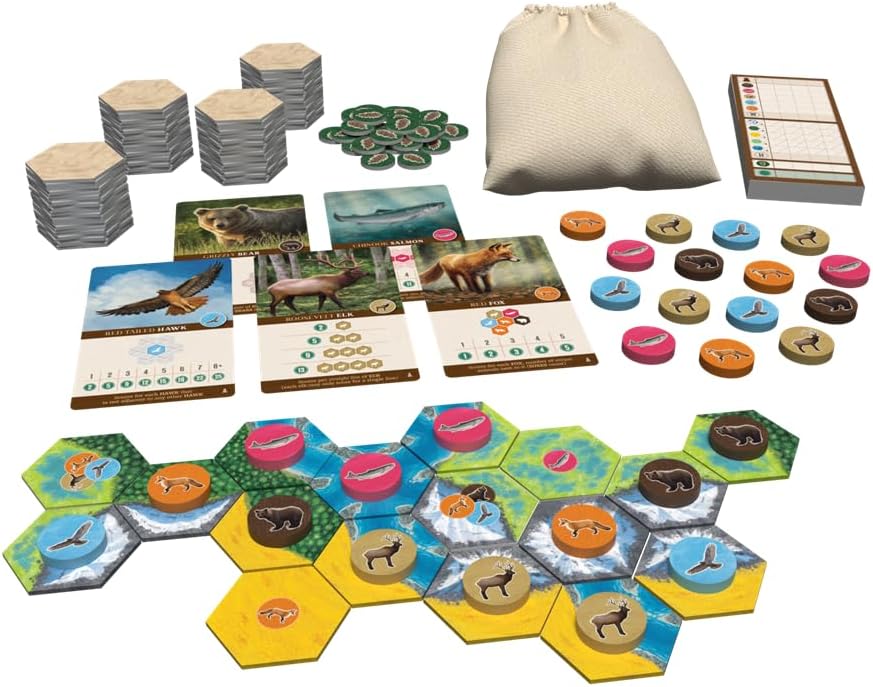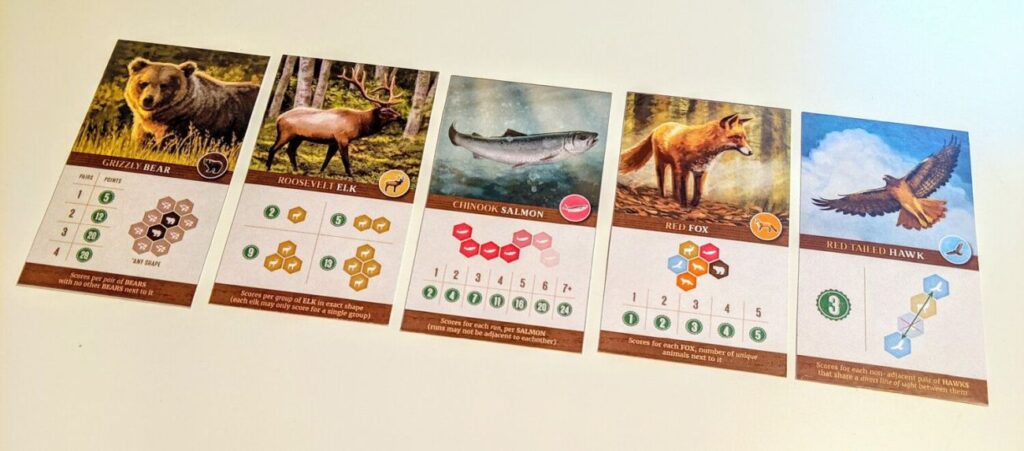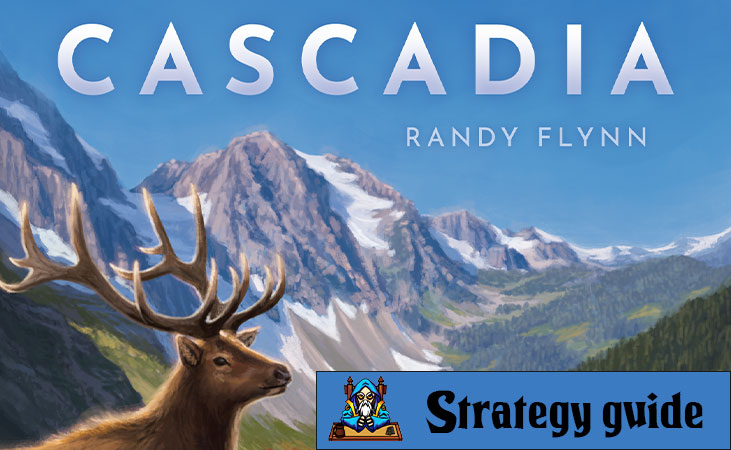How to play better and score big in Cascadia
Cascadia is a beautiful, relaxing game set in the Pacific Northwest, where your goal is to build habitats and place wildlife in ways that score the most points. While the rules are simple, mastering the game requires understanding how different scoring systems interact — and how to make the most out of every tile and token.
This guide will walk you through the essentials of scoring, gameplay strategies, and tips for each game phase to help you improve your Cascadia scores and enjoy the game even more.
How to score in Cascadia
There are four main ways to earn points in Cascadia:
- Wildlife tokens
- Habitat corridors
- Nature tokens
- Bonus points for largest habitat corridors
Let’s look at each of these in detail.

1. Wildlife Tokens
Each game, you’ll place 20 wildlife tokens. Most animals typically score around 2 to 3 points each, depending on the scoring cards in play. A strong game often nets you 60+ points from animals, which means averaging 3 points per token.
Key Tips:
- Foxes score based on surrounding animals and can be worth up to 7 points each.
- Hawks can score highly if placed well apart, especially with cards that reward spacing or patterns.
- Focus on the animals with the highest potential return, rather than trying to score well with all five.
- Use nature tokens to swap animals when needed to complete valuable formations.
2. Habitat Corridors
Each habitat type (forest, mountain, prairie, wetland, river) scores based on your largest contiguous corridor. You start with a tile containing all five habitats, so you begin the game with 5 points — 1 for each habitat type.
Scoring Goals:
- Ideally, every tile you place helps grow one or two of your corridors.
- A perfect game can earn up to 45 points from corridors and nature tokens, though 35+ is a solid target.
- Don’t waste tiles — avoid placing ones that don’t help expand your habitats.
Tile Distribution Insight:
- Tiles come in single or dual habitats.
- About 1/3 of tiles can grow two of your corridors — prioritize these to maximize efficiency.
- Make sure your starting tile adjacencies guide your early tile choices for double growth.
3. Nature tokens
These are extremely valuable:
- You earn them by placing a wildlife token on a single-habitat tile.
- They let you refresh the wildlife pool or pick mismatched pairs.
Best practices:
- Grab 1–2 in the early game to avoid bad draws.
- Don’t hoard them — use them when the benefit exceeds 1 point (since unused tokens are worth 1 point at game end).
- They are most useful in the late game, where precise moves matter.
4. Bonus points for habitat corridors
At the end of the game, players score bonus points for having the largest corridor in each habitat type. The bonuses vary based on player count:
- 2 players: 10 bonus points total.
- 3–4 players: 20 bonus points, though some may not be awarded due to ties.
Tip: Even if you can’t win a corridor, being competitive may block opponents from getting full points.

Cascadia game plan: Phase-by-phase
Understanding how to shift your focus during the game is crucial to improving.
Early Game (Rounds 1–5)
- Grab nature tokens to build flexibility.
- Lay the foundation for habitat growth — don’t overcommit to one strategy yet.
- Try to place tiles that contribute to at least one corridor.
Mid Game (Rounds 6–15)
- Focus on growing habitat corridors — ideally, place tiles that contribute 2 points (to two different corridors).
- Develop animal formations that offer 3+ points per token.
- Begin identifying which animal(s) you want to prioritize for maximum return.
Late Game (Rounds 16–20)
- Complete animal formations — don’t leave partially built combos.
- Secure your longest corridors, especially in contested habitats.
- Spend nature tokens wisely to maximize points or block opponents.
- Watch your opponents’ boards and deny key tiles if it helps your own game and hurts theirs.
Bonus strategy tips
- Don’t place tiles that block wildlife tokens. Always ensure that each tile can host an animal meaningfully.
- Flexibility is more important than long-term plans. You can’t predict what tiles and animals will be available.
- Don’t be afraid to specialize. If one animal card is highly lucrative, lean into it — even if it means ignoring others.
- Actively deny your opponents critical tiles when it doesn’t harm your own progress.
- Review the scoring cards before you start — they heavily influence how you should play.
Final word
A strong Cascadia game often scores 100+ points:
- ~60 from animals
- ~35 from corridors + nature tokens
- ~5–10 from bonuses
As you play more, you’ll start spotting patterns, building stronger combos, and anticipating tile flow better. Cascadia rewards both clever planning and adaptive thinking — and with these strategies, you’ll be well on your way to becoming a Cascadia pro.
Have your own tips or high scores to share? Drop a comment or join the discussion below!

